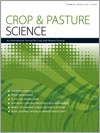Introgression of genes from Trifolium uniflorum L. into T. repens L. (white clover) is being investigated as a method to improve phosphorus (P) use efficiency in white clover; however, little is known about the edaphic adaptations or P physiology of T. uniflorum. Growth responses to added P of T. uniflorum, T. repens and some T. repens × T. uniflorum hybrids were determined in a glasshouse experiment in pots of soil. Trifolium uniflorum showed traits consistent with adaptation to low-P soils: slow growth rate, small leaves, relatively high leaf-tissue P concentrations, and sequestration of P in its roots when soil P levels were increased. The response of Kopu II, one of the hybrid backcross parents, was quite different; it showed high growth rate, large leaves, much lower leaf P concentrations, and a large decrease in root : shoot P allocation as soil P increased. Tahora, the other backcross parent, exhibited several characteristics that were intermediate between Kopu II and T. uniflorum, probably reflecting its breeding origins from New Zealand hill-country ecotypes. This study confirms the potential for interspecific hybridisation with T. uniflorum to increase the tolerance of white clover to low soil P levels, through incorporation of traits related to edaphic adaptations. Variation among the hybrid families in their response to changing soil P confirmed previously published conclusions about the need to screen widely in hybrid material.
How to translate text using browser tools
31 July 2015
Phosphate response of Trifolium uniflorum compared with T. repens and some T. repens × T. uniflorum hybrids
S. N. Nichols,
J. R. Crush
ACCESS THE FULL ARTICLE

Crop and Pasture Science
Vol. 66 • No. 8
July 2015
Vol. 66 • No. 8
July 2015
interspecific hybridisation
legumes
phosphorus-use efficiency
soil fertility
Trifolium repens




